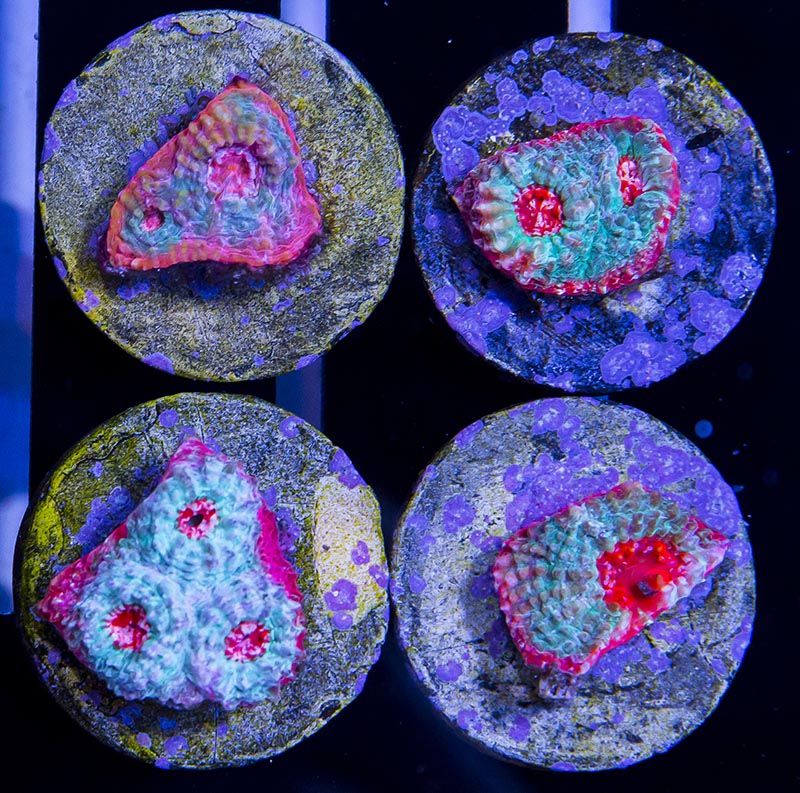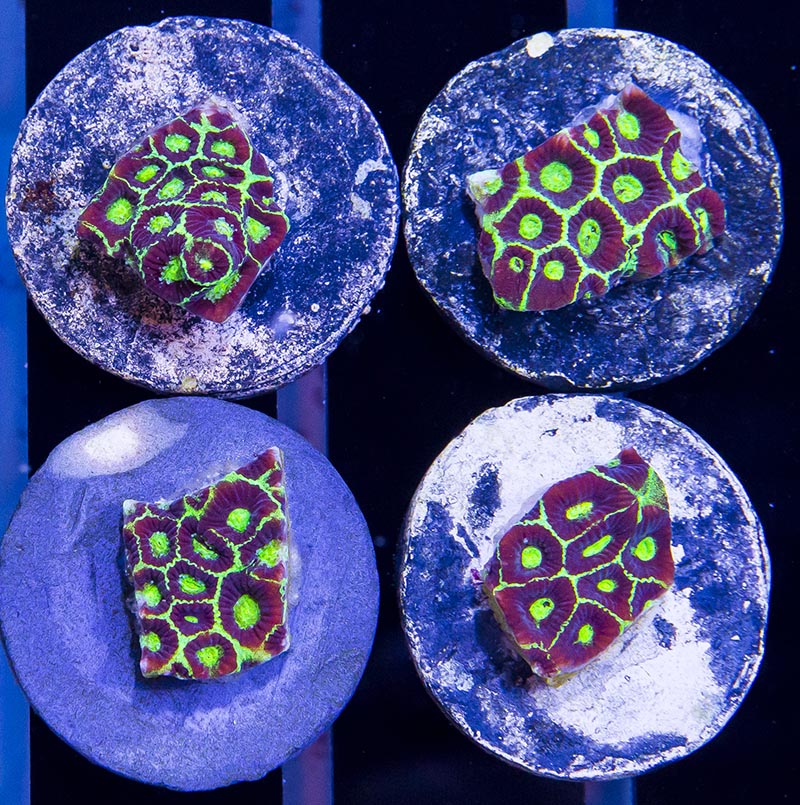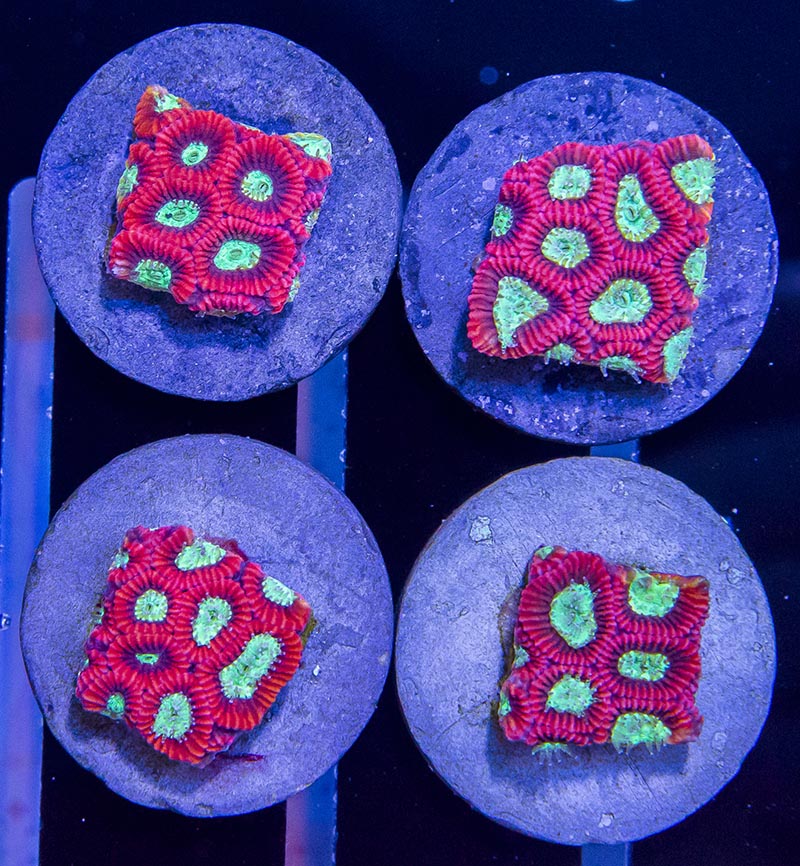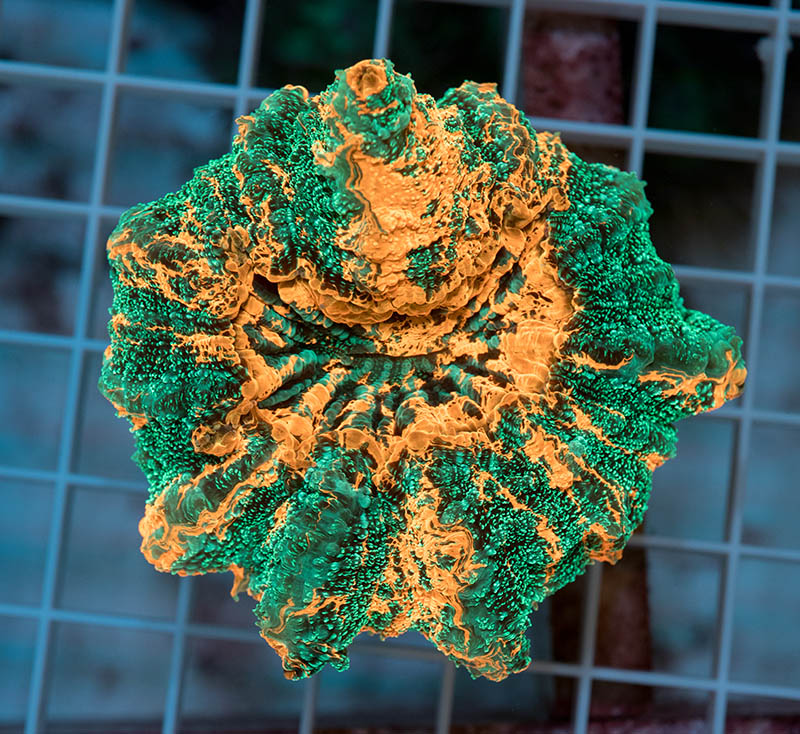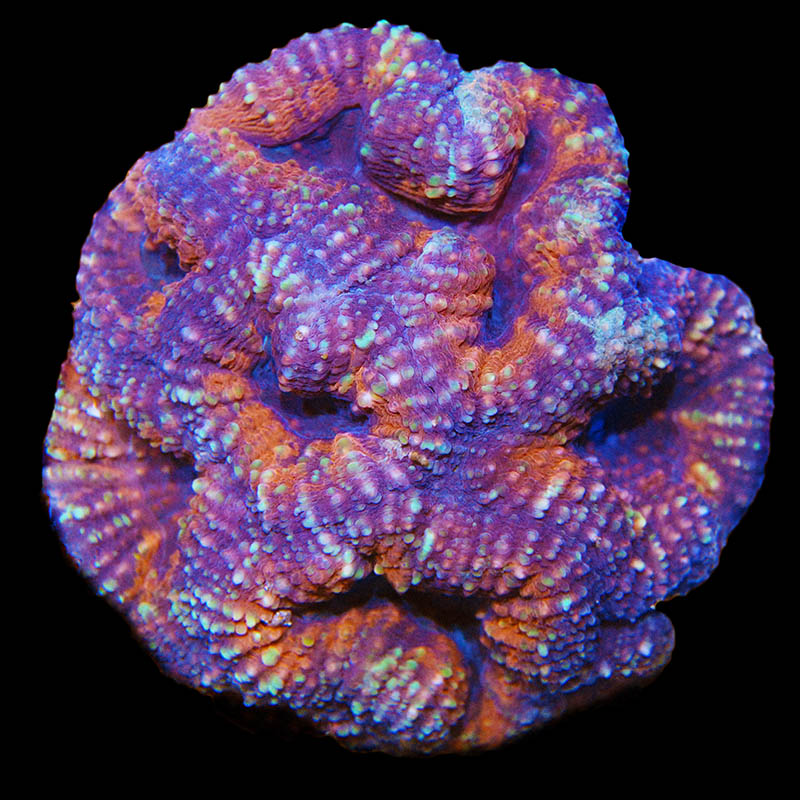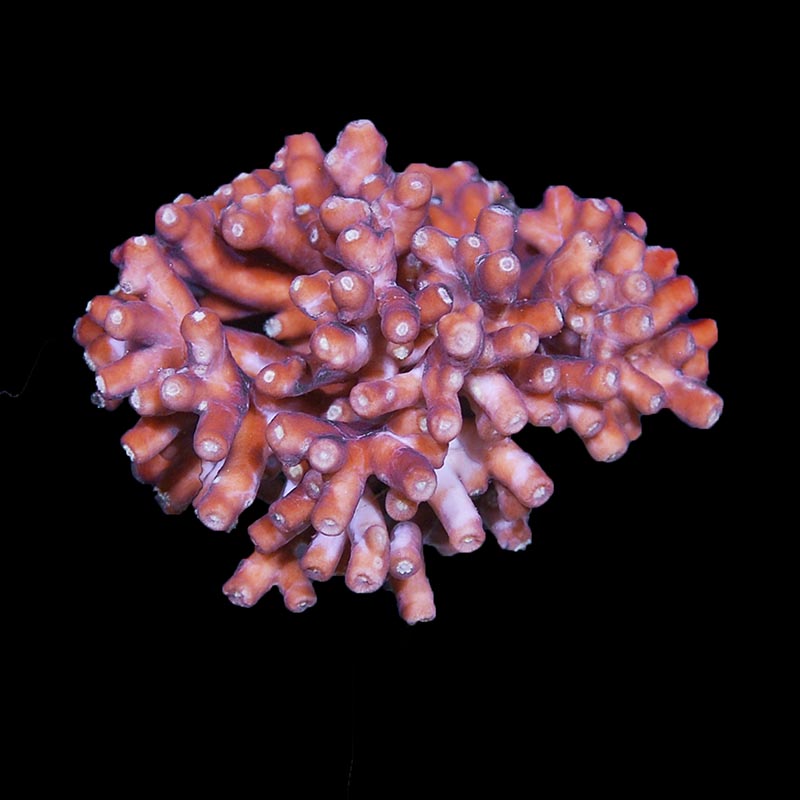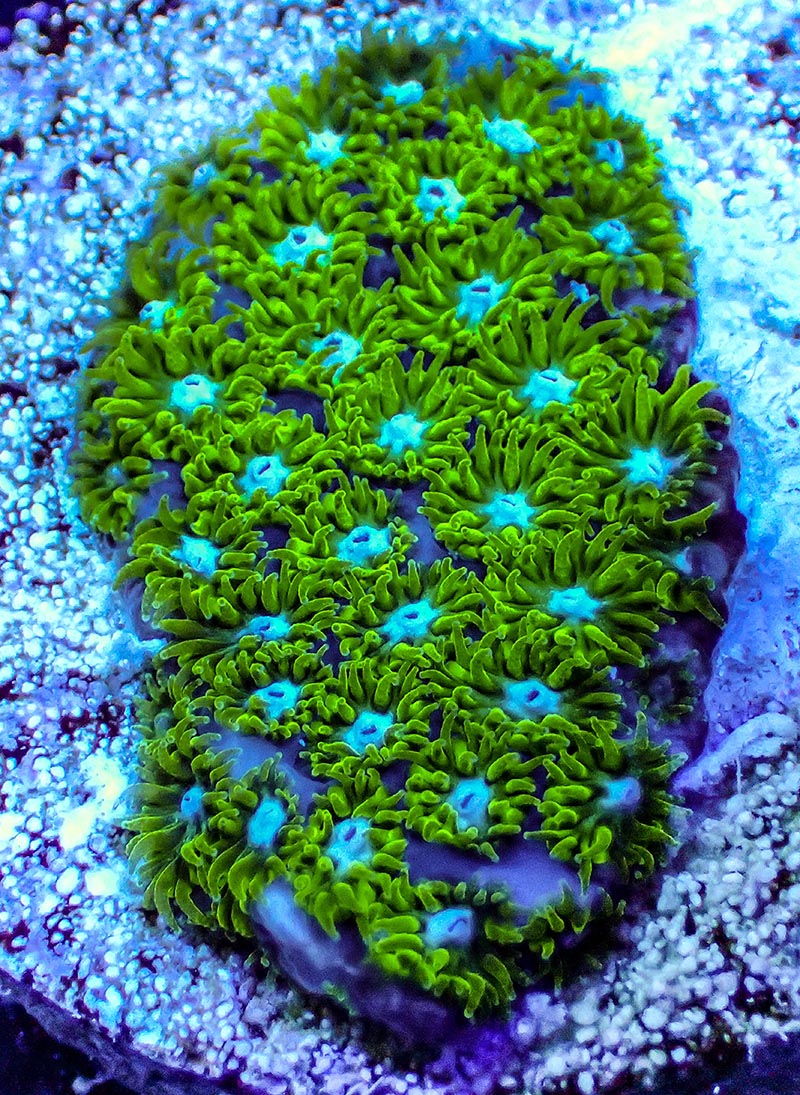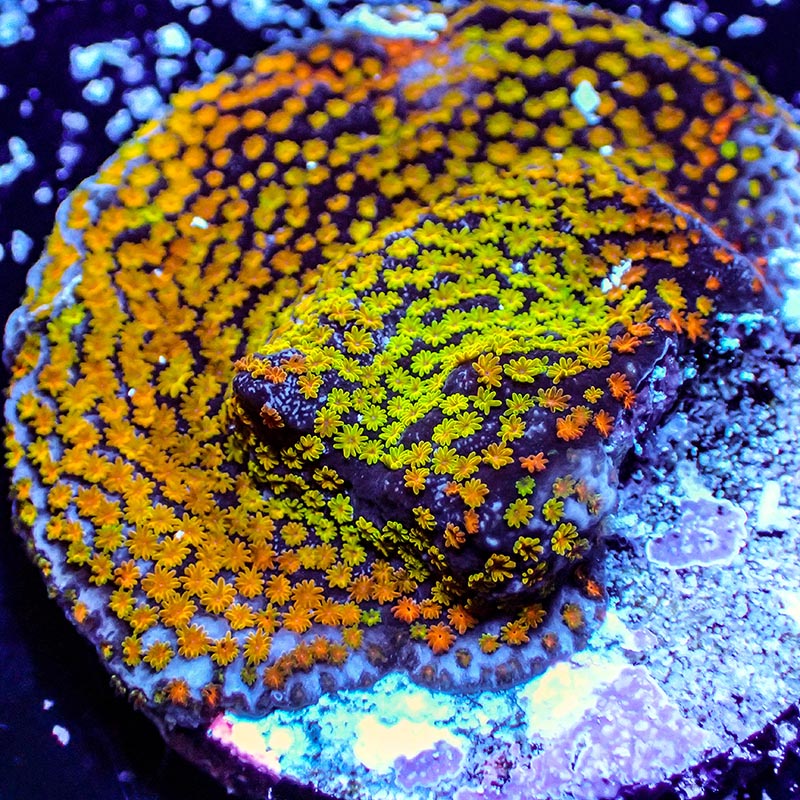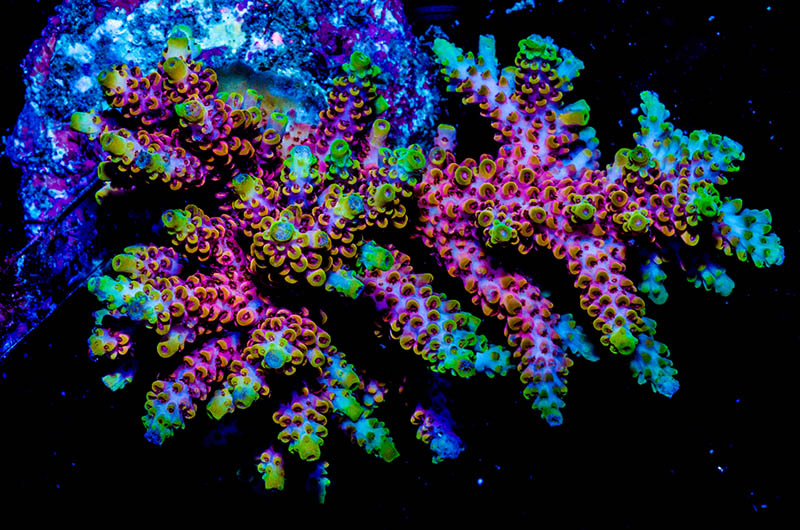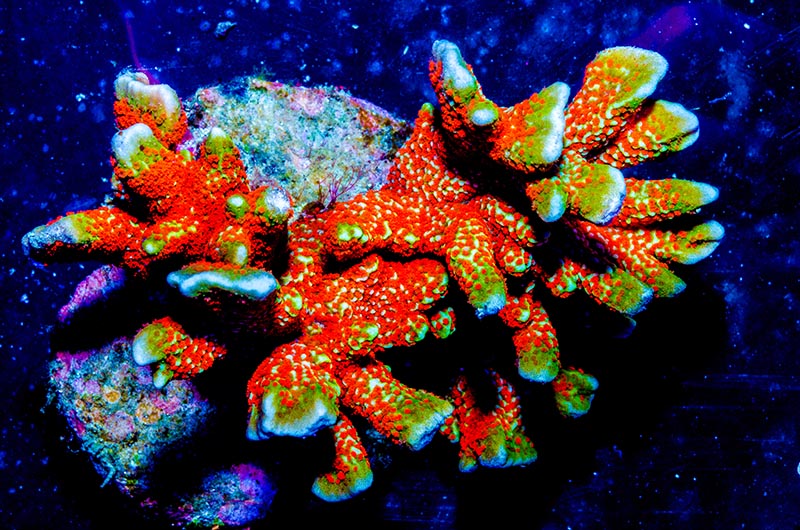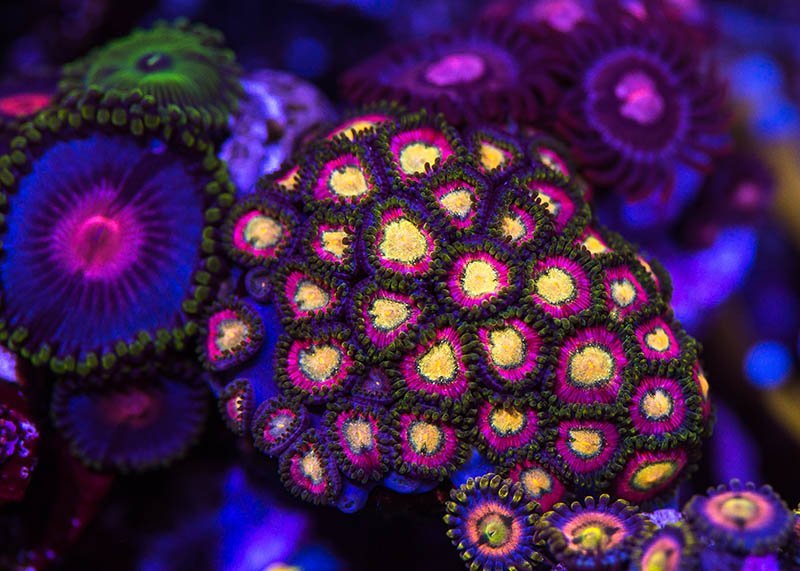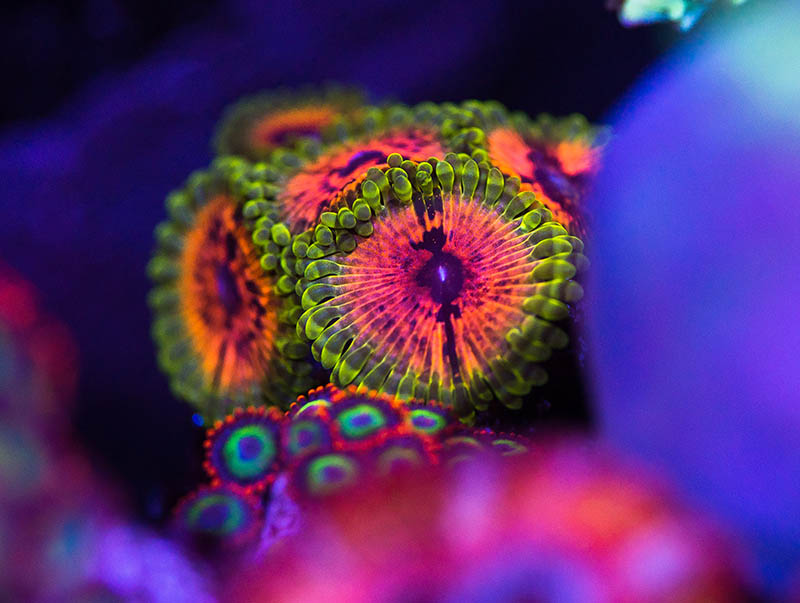
World Wide Corals seized the first opening spread of 2018 with this stunning macro photo of a Japanese Toadstool Leather Coral. You’ll have to open this issue to see what other corals made the cut to kick off the new year.
Turn the pages of your new issue to catch a glimpse of some of the hottest corals on the market right now, and see even more that didn’t make the final cut in this exclusive ONLINE BONUS.
For every issue of CORAL Magazine, we reach out to coral collectors, importers, and farmers around the planet, asking them to show off the most exceptional coral specimens they’re putting into the marine aquarium trade. We are routinely overwhelmed by the responses we get, but for each coral that ultimately graces the pages of the magazine, many exceptional specimens must be passed over.
What becomes of the dozens of stunning corals that don’t make it onto the printed page? Herewith: a look at some exceptional coral morphs and cultivars that did not make it into the current issue, but that we suspect you will find worthy of a second look.
For the sumptuous print edition of VISIONS, look for a copy of CORAL Magazine at your LFS or Barnes & Noble bookstore, and see the corals that bested the ones below. Comments or suggestions to our editors may be posted below.
—Matt Pedersen
ECC Red Rim Chalice
Echinophyllia sp.
Eye Catching Corals
Vienna, Ohio
eyecatchingcoral.com
Geographic Origin: Australia
Light Level: Low to Moderate
Flow Level: Moderate
Care Level: Intermediate
Photo Credit: Eye Catching Coral
ECC Toxic Honeycomb Favia
Favia sp.
Eye Catching Corals
Vienna, Ohio
eyecatchingcoral.com
Geographic Origin: Indonesia
Light Level: Moderate
Flow Level: Moderate
Care Level: Intermediate
Photo Credit: Eye Catching Coral
ECC Red Soul Micro Favia
Favia sp.
Eye Catching Corals
Vienna, Ohio
eyecatchingcoral.com
Geographic Origin: Australia
Light Level: Moderate
Flow Level: Moderate
Care Level: Intermediate
Photo Credit: Eye Catching Coral
There was no shortage of eye-popping, pulse-quickening corals from our contributors. Here are some highlights that came in towards the year’s end, starting with some additional information from a print selection that simply didn’t have enough room for the great commentary furnished by Quality Marine’s Eli Flieishauer.
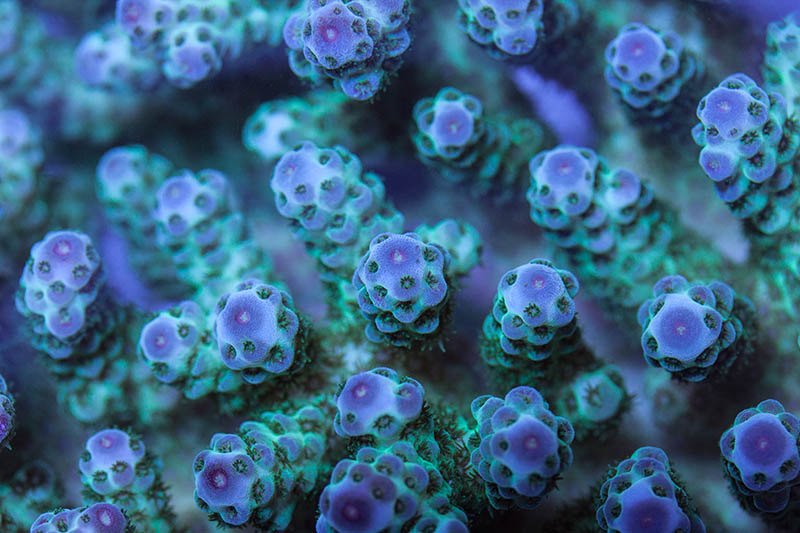
The Tasmanian Tabler, from Quality Marine, as included in the January/Febuary 2018 print edition of CORAL Magazine.
Tasmanian Tabler
Acropora sp.
Quality Marine
Los Angeles, California
qualitymarine.com
Geographic Origin: Australia
Light Level: High
Flow Level: High and Turbulent
Care Level: Difficult
Notes: Tabling Acroporas are demanding. They need regular feeding and very turbulent flow. Excellent, stable water quality and tank mates that won’t pick on them are also requisite. They are also especially susceptible to chemical warfare in the aquarium, so a species (or at least regional genus-specific) aquarium is recommended. Bright lighting isn’t as important as many people think it is, but good spectrum, high-intensity lighting will help, and make them display very well.
Photo Credit: Gaspare Gladstone for Quality Marine
Marmalade Donut Coral
Acanthophyllia deshayesiana
Quality Marine
Los Angeles, California
qualitymarine.com
Geographic Origin: Indonesia
Light Level: Low
Flow Level: Low
Care Level: Moderate
Notes: This coral isn’t really all that demanding, but for best health and coloration it demands low flow, lots of food, good spectrum light, and a tank free of things that will pick on it. Placement on sand or aquarium bottom is also required, because the tissue of the coral is easily damaged by rocks or aggressive flow.
Photo Credit: Gaspare Gladstone for Quality Marine
AML Lobo
Lobophyllia sp.
Aqua Medic Live
Loveland, Colorado
aquamedicusa.com
Geographic Origin: Jakarta
Light Level: Low
Flow Level: Low
Care Level: Intermediate
Photo Credit: Chad Wohlers
AML Heronensis
Turbinaria heronensis
Aqua Medic Live
Loveland, Colorado
aquamedicusa.com
Geographic Origin: Australia
Light Level: High
Flow Level: High
Care Level: Intermediate
Notes: This is an underappreciated Turbinaria species that can grow in amazing shapes and patterns. It does well in many different aquarium conditions, and these conditions will dictate the coral’s growth pattern.
Photo Credit: Chad Wohlers
Blue-Eyed Green Skirt Leptastrea
Leptastrea sp.
A&M Aquatics
Lansing, Michigan
amaquatics.com
Geographic Origin: Pacific Ocean
Light Level: Low to Moderate
Flow Level: Moderate
Care Level: Easy
Notes: This Blue-Eyed Green Skirt Leptastrea really glows under LED lighting! It will encrust and follow the undulating path of your live rock. It’s a good beginner coral that is easy to care for with low to moderate lighting, and only requires occasional feedings with small particles of food.
Photo Credit: Brian Dowling
Rainbow Montipora
Montipora sp.
A&M Aquatics
Lansing, Michigan
amaquatics.com
Geographic Origin: Indo-Pacific
Light Level: High
Flow Level: Moderate to High
Care Level: Easy
Notes: The A&M Rainbow Montipora is a multigenerational aquacultured coral. The deep purple base causes the orange, yellow, and red polyps to glow under actinic lighting. We like to keep our Rainbow Montiporas under high lighting, otherwise the intensity of their coloration fades out over time.
Photo Credit: Brian Dowling
Pink Lemonade Acro
Acropora microclados
Bali Aquarium
Denpasar, Bali, Indonesia
baliaquarium.net
Geographic Origin: East Coast of Bali
Light Level: High
Flow Level: High
Care Level: Difficult
Notes: This coral is the Indonesian version of the Strawberry Shortcake from Australia. This shallow-water species is quite common in shallow, high-velocity environments. Given the right conditions, it’s a fast-growing species, but it will only maintain coloration under very intense lighting. In the wild, it grows into a table-like shape 10 inches above the substrate to collect food in the water column, so feeding of very small organisms will be beneficial.
Photo Credit: Vincent Chalias
Forest Fire Monti
Montipora aff. digitata
Bali Aquarium
Denpasar, Bali, Indonesia
baliaquarium.net
Geographic Origin: North Bali
Light Level: High
Flow Level: Moderate
Care Level: Intermediate
Notes: This strain originally comes from a very shallow and protected bay in North Bali, but it is grown in South Bali with faster water currents and cooler water, which results in better coloration. [Editor’s Note – this coral is generally in the trade as Montipora digitata, although Bali Aquariums suggests this may be a different, closely allied species.]
Photo Credit: Vincent Chalias
WWC Pixie Dust Zoanthids
Zoanthus sp.
World Wide Corals
Orlando, Florida
worldwidecorals.com
Geographic Origin: Indonesia
Light Level: Moderate
Flow Level: Moderate
Care Level: Intermediate
Notes: This special Zoanthid morph offers a unique pattern with more than five colors found throughout the polyp. It is a smaller Zoanthid that will blow your mind!
Photo Credit: Jacob Larsen
Hallucinations Zoanthids
Zoanthus sp.
World Wide Corals
Orlando, Florida
worldwidecorals.com
Geographic Origin: North Bali
Light Level: Moderate to High
Flow Level: Moderate
Care Level: Intermediate
Notes: Hallucinations have been in the hobby for over five years and are one of the most spectacular and sought-after Zoas a reefer can find!
Photo Credit: Jacob Larsen
For those new to our CORAL Visions series, take note: Recognized coral vendors furnish their own subjective and generalized rating on a particular coral’s care requirements. Out of respect for the expertise of these professional aquarists, and the realization that different cultivars of the same coral species may have different needs, we refrain from attempting to equalize or normalize these ratings between individuals of the same species or type. Therefore, when comparing entries, you might see different ratings for the same coral’s light, flow, or care needs.
